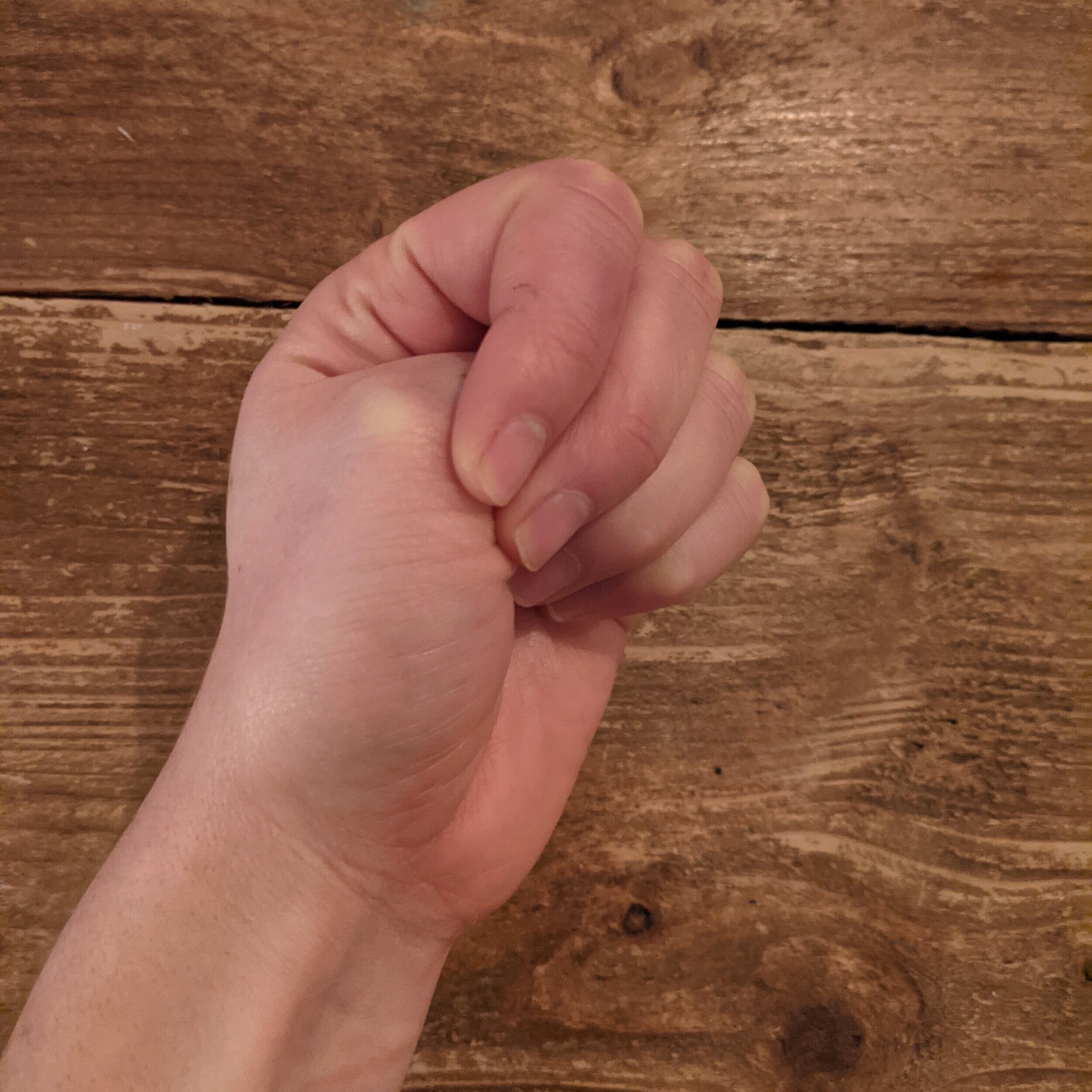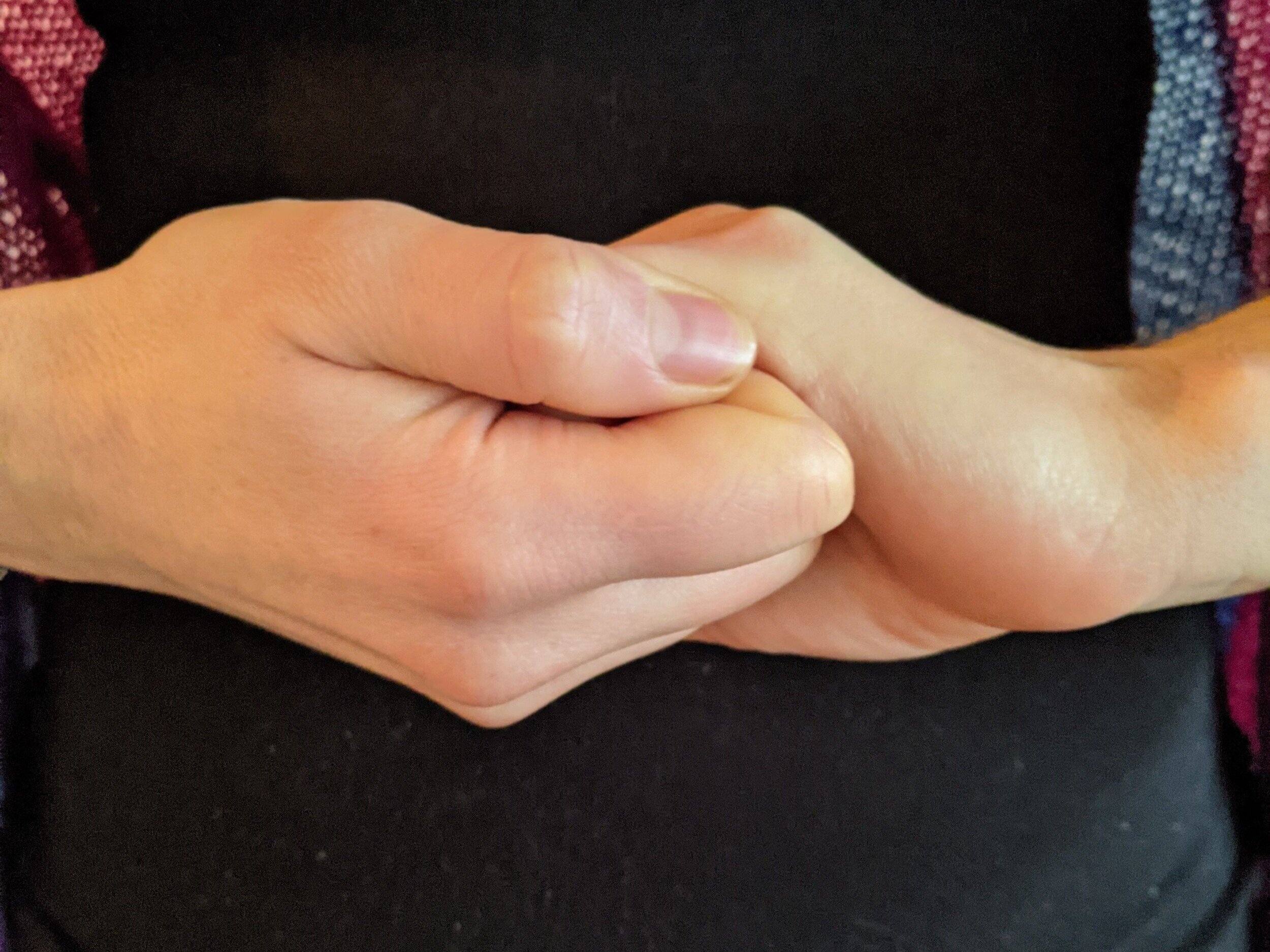Examples of Yoga Mudras
Understanding Yoga Mudras and some examples to try
This is a useful and accessible introduction to yoga mudras, (sometimes called finger yoga), especially for those who are new to yoga. In this article we will explore the meaning of yoga mudras, the benefits, how to apply them into your practice, and some easy-to-follow examples of yoga mudras.
What is a Yoga Mudra?
The Sanskrit word ‘mudra’ means gesture, and the term is almost always used in reference to a hand gesture. There are around 100 different types of mudras, although in yoga practices today, only around 20 are commonly utilised. In traditional Vedic scriptures, mudras are said to be a healing modality.
As mudras involve particular finger and hand postures, they create a subtle connection with the instinctual patterns between the brain and the physical body. Over time, they begin to influence the unconscious reflexes between body and brain. They tend to influence in a harmonising way, allowing the internal energy to flow with less disruption, and training the mind-body connection towards more stability and balance. This allows for healing to occur.
Each finger represents each element
Ayurveda is the ancient knowledge system and a ‘science of life’ that underpins the practice of mudras and yoga. From the perspective of Ayurveda, the universe and all living things comprise of five key elements: space (ether), air, fire, water and earth. Each of these elements have physical properties and elemental characteristics. All five play a role within the human body and mind. It is said that each finger represents each of the five elements:
Thumb = fire
Forefinger = wind
Middle finger = ether (space)
Ring finger = earth
Little finger = water
What are the benefits of Yoga Mudras?
Yoga mudras have a harmonising effect on the mind and body. They involve subtle movements and postures in the hands and fingers that directly stimulate the energy meridians that run through the hands and fingers. Given the correspondence to the five elements, and given that the five elements each have characteristics, the stimulation of certain fingers would also affect the balance and power of these aligned characteristics.
In a practical sense, the use of mudras helps you to concentrate the mind when trying to meditate, or cultivate present awareness. When you hold the finger postures, you have to keep just the right amount of alertness and pressure. This keeps the mind alert and focused. As yoga mudras stimulate energy meridians, they are also known to assist us in cultivating more motivation and optimism.
How to use Yoga Mudras
Sit comfortably in a relatively uncluttered and quiet environment where you feel safe. Ensure your spine is straight and your posture is dignified, without being tense or forced. Arrange your hands and fingers into the chosen mudra. Your hands should be active in holding the mudra, but not tense. Close your eyes, and bring the mind to focus on the breath. Ensure you keep the hands and fingers alert enough to maintain the mudra. Let your thoughts settle and focus your mind on your breath, or the hand posture. A practice of 10-20mins daily is sufficient. Like any self-healing practice, the best results are unlocked when you practice daily over an extended period of time.
Yoga Mudras To Use Everyday
Buddhi Mudra
This mudra combines the opposing, or conflicting elements of fire and water. It is known as the ‘seal of mental clarity’. The little finger represents water and communication combined with fire in the thumb. When utilised regularly this mudra balances and activates the salivary glands, moisture and lubrication in the body. It encourages openness and fluid, effective communication, as well opening up the ‘internal dialogue’, or intuition.
Buddhi Mudra - Photo: Nina Butler.
Brahma Mudra
This mudra encloses the fire element in all other four elements. The thumb is placed across the base of the fingers, and then the pads of the four fingers light press down into the palm (in a singular hand called Adi Mudra). The light fist in both hands is then turned so the palm faces upwards. Bring the knuckles of both hands together in front of the navel area and hold here. This mudra is considered to balance the nervous system, and improve the absorption of oxygen in the blood.
Adi Mudra - Photo: Nina Butler.
Brahma Mudra - Photo: Nina Butler.
Prana Mudra
This mudra is the all round energizer! It combines, fire, water, and earth. Use this daily if you are feeling sluggish, or lacking in motivation. The pinky and ring finger is placed with the tip of the thumb. Apply this posture in both hands, turn the palms up, and rest the back of hands lightly on your thighs.
Prana Mudra - Photo: Nina Butler.
Apana Mudra
This mudra activates your capacity for downward energy flow from the digestive tract. It is a powerful stimulant for the processes of elimination, an aid for women who struggle with PMS symptoms, and tool in digesting and ‘letting go’ of toxic emotions, thoughts or memories. It combines fire, ether, and earth. Bend the middle and ring finger. Place the thumb lightly over the nails of the middle and ring fingers. Keep the index and pinky fingers erect. Turn the palms upwards and place the back of the hands lightly on your thighs.
Apana Mudra - Photo: Nina Butler.
Ganesha Mudra
This mudra involves all fingers on both hands. It refers to the Hindu deity Ganesha, an animal (elephant) personification that represents the force within us all to overcome challenges and remove obstacles. Therefore, this is aligned with our personal capacity for transformation, and the positive energy needed to persevere. For this hand posture, you will need to begin by placing your left hand in front of your belly with the palm facing away from you, and the fingers lightly curled. Then place the right palm into the left, with the palm facing towards you, bring the curled fingers of both hands to a ‘lock’ or ‘seal’. Keep the hands here with the elbows out wide, and gentle press the collarbones down away from the jaw.
Ganesh Mudra - Photo: Nina Butler.
Would you like to learn more about Yoga Mudras, meditation and other aspects of yoga?
Join Nina on a yoga retreat!







